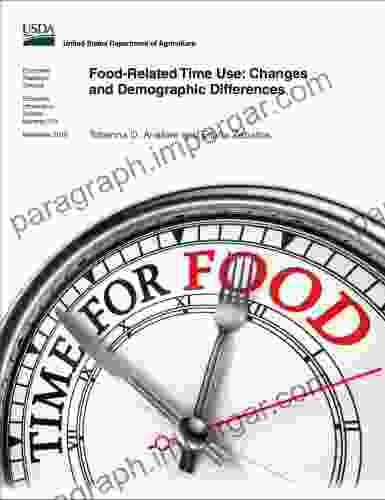Food Related Time Use Changes And Demographic Differences: A Comprehensive Guide

5 out of 5
| Language | : | English |
| File size | : | 1312 KB |
| Text-to-Speech | : | Enabled |
| Screen Reader | : | Supported |
| Enhanced typesetting | : | Enabled |
| Print length | : | 396 pages |
Food is an essential part of life. We all need to eat to survive, but the way we eat varies greatly from person to person. Some people spend a lot of time cooking and preparing food, while others prefer to eat out or buy prepared foods. The amount of time we spend on food-related activities can also vary depending on our age, gender, race, and income.
This article will explore the relationship between food related time use and demographic factors. We will discuss how age, gender, race, and income can affect the amount of time we spend on food-related activities. We will also discuss the implications of these findings for policymakers and researchers working to address food insecurity and improve the overall health and well-being of communities.
Age
Age is one of the most significant demographic factors that can affect food related time use. As we get older, we tend to spend less time on food-related activities. This is likely due to a number of factors, including changes in our physical abilities, our social networks, and our priorities.
For example, older adults may be less likely to cook for themselves because they have difficulty standing for long periods of time or because they lack the strength to lift heavy pots and pans. They may also be more likely to live alone, which can make it difficult to prepare meals for one person. Additionally, older adults may have less time for food-related activities because they are more likely to be retired and have other commitments, such as volunteering or spending time with grandchildren.
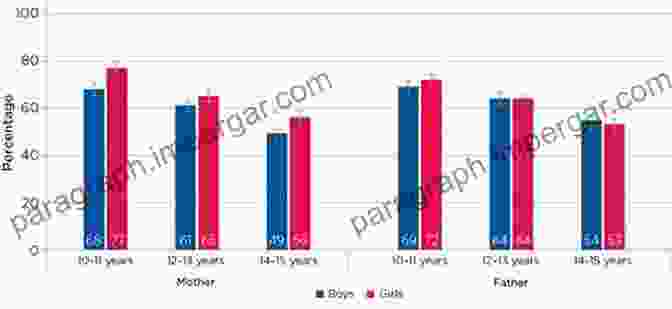
Gender
Gender is another important demographic factor that can affect food related time use. In general, women spend more time on food-related activities than men. This is likely due to a number of factors, including cultural norms, social expectations, and the division of labor within the household.
In many cultures, women are seen as the primary caregivers and are responsible for feeding their families. This can lead to women spending more time cooking, preparing food, and cleaning up after meals. Additionally, women are more likely to work part-time or stay at home with children, which can give them more time to devote to food-related activities.
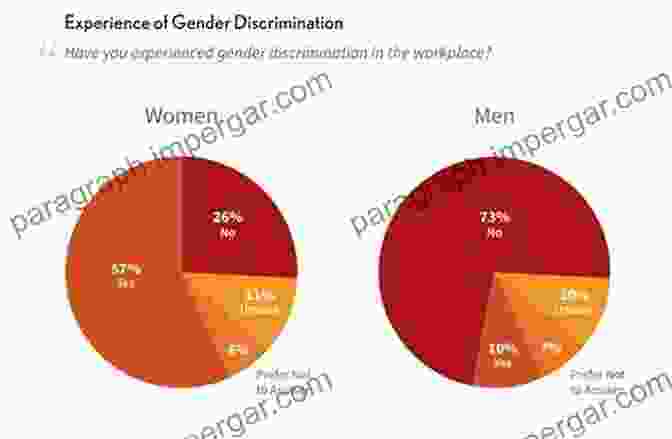
Race
Race is another demographic factor that can affect food related time use. In general, black and Hispanic households spend more time on food-related activities than white households. This is likely due to a number of factors, including cultural traditions, economic disparities, and access to affordable and healthy food.
For example, black and Hispanic families are more likely to live in food deserts, which are areas with limited access to fresh and affordable food. This can make it difficult for these families to prepare healthy meals at home. Additionally, black and Hispanic families are more likely to be low-income, which can make it difficult to afford healthy food.
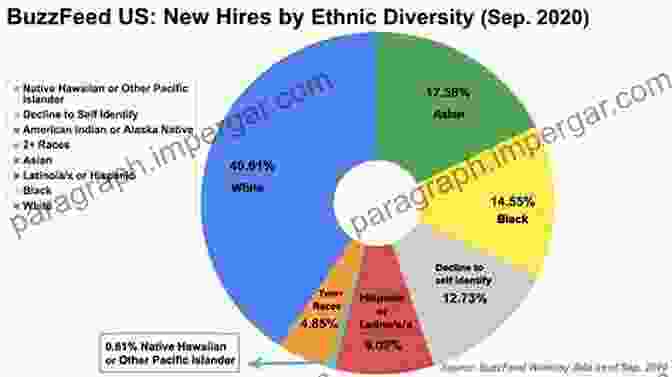
Income
Income is another important demographic factor that can affect food related time use. In general, households with higher incomes spend less time on food-related activities than households with lower incomes. This is likely due to a number of factors, including the cost of food, the availability of convenience foods, and the opportunity cost of time.
For example, households with higher incomes are more likely to be able to afford to buy prepared foods or eat out, which can save them time. Additionally, households with higher incomes are more likely to have access to conveniences such as dishwashers and microwave ovens, which can also save time. Finally, households with higher incomes are more likely to have members who are employed full-time, which means they have less time available for food-related activities.
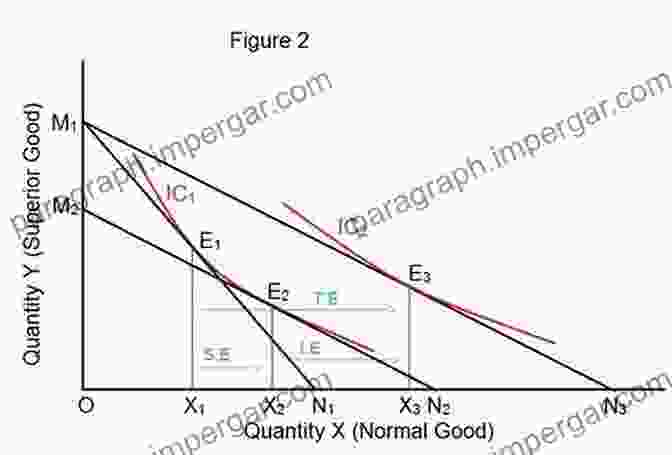
Implications for Policymakers and Researchers
The findings of this research have important implications for policymakers and researchers working to address food insecurity and improve the overall health and well-being of communities. For example, policymakers can use this information to develop targeted programs that help low-income families and communities of color access affordable and healthy food. Additionally, researchers can use this information to develop new interventions that help people save time on food-related activities.
By understanding the relationship between food related time use and demographic factors, policymakers and researchers can develop more effective strategies to address food insecurity and improve the overall health and well-being of communities.
Food related time use is a complex issue that is affected by a number of demographic factors, including age, gender, race, and income. By understanding the relationship between these factors and food related time use, policymakers and researchers can develop more effective strategies to address food insecurity and improve the overall health and well-being of communities.
5 out of 5
| Language | : | English |
| File size | : | 1312 KB |
| Text-to-Speech | : | Enabled |
| Screen Reader | : | Supported |
| Enhanced typesetting | : | Enabled |
| Print length | : | 396 pages |
Do you want to contribute by writing guest posts on this blog?
Please contact us and send us a resume of previous articles that you have written.
 Book
Book Novel
Novel Page
Page Chapter
Chapter Text
Text Story
Story Genre
Genre Reader
Reader Library
Library Paperback
Paperback E-book
E-book Magazine
Magazine Newspaper
Newspaper Paragraph
Paragraph Sentence
Sentence Bookmark
Bookmark Shelf
Shelf Glossary
Glossary Bibliography
Bibliography Foreword
Foreword Preface
Preface Synopsis
Synopsis Annotation
Annotation Footnote
Footnote Manuscript
Manuscript Scroll
Scroll Codex
Codex Tome
Tome Bestseller
Bestseller Classics
Classics Library card
Library card Narrative
Narrative Biography
Biography Autobiography
Autobiography Memoir
Memoir Reference
Reference Encyclopedia
Encyclopedia Jenny Macleod
Jenny Macleod Jenny La Sala
Jenny La Sala Jill Lenk Schilp
Jill Lenk Schilp Joe Klein
Joe Klein Jeffrey Blair Latta
Jeffrey Blair Latta Jim Corbett
Jim Corbett John Baldoni
John Baldoni Jens Volker Kratz
Jens Volker Kratz Jehu Hanciles
Jehu Hanciles Joe Mcginniss
Joe Mcginniss Jeff Swimmer
Jeff Swimmer Jerry B Marion
Jerry B Marion Jody Houser
Jody Houser Jianzhuang Xiao
Jianzhuang Xiao Jim Curtis
Jim Curtis Jessica Harris
Jessica Harris Joachim Mutter
Joachim Mutter Jinfan Zhang
Jinfan Zhang Jennie Garth
Jennie Garth Jimmy Evans
Jimmy Evans
Light bulbAdvertise smarter! Our strategic ad space ensures maximum exposure. Reserve your spot today!

 Fyodor DostoevskyUnlock the Secrets of True Happiness: Discover the Power of Happiness Is An...
Fyodor DostoevskyUnlock the Secrets of True Happiness: Discover the Power of Happiness Is An...
 Ethan MitchellEssays and Reviews 1959-2002: A Profound Exploration of Literature, Culture,...
Ethan MitchellEssays and Reviews 1959-2002: A Profound Exploration of Literature, Culture,...
 Salman RushdieUnleash Your Chess Potential with 960 Stems: The Ultimate Guide to Chess960...
Salman RushdieUnleash Your Chess Potential with 960 Stems: The Ultimate Guide to Chess960...
 Harry CookThe Short Stackers' Definitive Guide to Winning Poker: Upswing Your Game and...
Harry CookThe Short Stackers' Definitive Guide to Winning Poker: Upswing Your Game and... Jamison CoxFollow ·12.4k
Jamison CoxFollow ·12.4k Ivan TurnerFollow ·3.3k
Ivan TurnerFollow ·3.3k Mark MitchellFollow ·5.6k
Mark MitchellFollow ·5.6k Jimmy ButlerFollow ·8.3k
Jimmy ButlerFollow ·8.3k Fyodor DostoevskyFollow ·9.2k
Fyodor DostoevskyFollow ·9.2k Chandler WardFollow ·19.7k
Chandler WardFollow ·19.7k Benjamin StoneFollow ·8k
Benjamin StoneFollow ·8k Griffin MitchellFollow ·2.2k
Griffin MitchellFollow ·2.2k

 Christian Barnes
Christian BarnesUnleash Your Creativity: Build Interlocking 3D Animal and...
Discover the Art of Paper...

 Terry Bell
Terry BellUnveiling the Secrets of Winning: A Comprehensive Guide...
In the realm of chance and fortune, the...

 Albert Camus
Albert Camus101 Things That You Should Do Before Leaving The House In...
Starting your day right is...

 Anthony Burgess
Anthony BurgessForcing Move 2024 Volume: Unleash Your Inner Grandmaster
Embark on an extraordinary chess...
5 out of 5
| Language | : | English |
| File size | : | 1312 KB |
| Text-to-Speech | : | Enabled |
| Screen Reader | : | Supported |
| Enhanced typesetting | : | Enabled |
| Print length | : | 396 pages |


